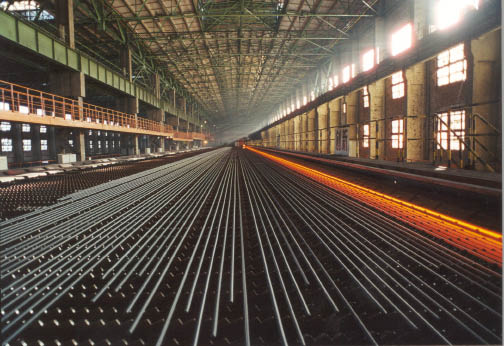Urumqi Economic and
Technological Development Zone
The export-oriented economy cluster includes an export processing zone, an international railway logistics park, as well as a proposed bonded manufacturing area. The export-oriented economy also receives a boost from logistics solutions provided by the nearby international airport and three railway stations.
The priorities of the headquarter economy cluster, besides attracting leading businesses to set up plants in the zone, are to develop a modern services sector and tourism. It has a high-speed rail connection close by to ease commutes into and out of the zone, and is developing the Bainiao Lake New District to improve the urban eco-environment.
The knowledge economy cluster consists of the Xinjiang Software Park, a college town composed of five universities, an overseas returnees start-up park, a postgraduate scientific research workstation, and a university technology industrial park. With the support of significant monetary resources, advanced technology, and a talented workforce, the cluster is Xinjiang’s innovation capital.
UETD neighbors a high-speed rail hub in the east and the Urumqi International Airport in the north. It has the largest railway marshaling station, cargo station, and container center station in all of Xinjiang, and is bifurcated by Wuchang Avenue and Wukui Highway.
In 2012, UETD continued on its upward growth trajectory, all the while maintaining stable expansion, and discovering and exploiting competitive strengths. As a result, it registered a steady up-tick in investment. Last year, 31 investment projects were approved for a total investment of RMB 45.2 billion. The value of UETD contracts signed at the China-Eurasian Expo accounted for 40 percent of the total in Urumqi, laying an important foundation for achieving the zone’s growth goal of “doubling major economic index in three years.”
In 2012, the area’s GDP was RMB 34 billion, a year-on-year increase of 19.8 percent. Industrial added value output grew by 20.5 percent to RMB 14.1 billion. Total fixed assets investment reached RMB 25 billion, an increase of 63.7 percent. The value of total imports and exports reached US $2.8 billion, an increase of 15.5 percent year-on-year. Its fiscal revenue stood at RMB 4.72 billion, 28 percent up on the year before. In a comprehensive assessment of development zones conducted by the Ministry of Commerce, UETD ranked third in Wes-tern China.
In line with national strategic requirements to transform economic growth patterns, UETD continues to optimize its industrial structure. Currently located in UETD are the nation’s leading wind power equipment manufacturer Goldwind; the largest steel enterprise in Xinjiang, Baosteel Group’s Bayi Iron & Steel Co., Ltd., as well as well-known brands and enterprises such as Yitai Group, Shanghai Volkswagen, Fufeng Group, Sinotruck, Sany Heavy Industry, Hongyunhonghe Group, Shaanxi Automobile Group, Dongfeng Motor Corporation, Xinjiang Machinery Research Institute, Conch Profiles and Science, COFCO Coca-Cola Beverages Ltd., and Master Kong Beverage Co., Ltd.
 |
| The Bayi Iron & Steel Plant in UETD. |
The development zone has developed three pillar industries including metallurgy, wind power, and food and be-verage, four leading industries, namely automobile manufacturing, mechanical equipment, new building materials, and modern logistics, as well as four emerging industries: the new coal-to-chemical industry, information engineering, biomedicine, and new materials. In addition, UETD strives to build seven bases — the largest wind power equipment manufacturing base nationwide, the largest metallurgy base in northwestern China, an automobile and engineering machinery manufacturing base for the whole of Northwest China, the largest food and beverage base in Xinjiang, a business headquarters base, an international trade logistics and export processing base for Asia and Europe, and a software engineering base for Central Asia. All these are well on their way to opening for business.
Meanwhile, UETD focuses on both park development and city construction and attaches great importance to advanced manufacturing and modern services sectors.
UETD aims to continuously promote city construction and industrial development. It has a concrete plan for this. First, it aims to boost the development of the Bainiao Lake New District through high-speed rail access. Second, new buildings are to be erected in the south of the area; the middle is to serve as a hub while the north will be developed further.
Third, UETD’s management aims to promote the development of functional area clusters, including the industrial park cluster, export-oriented economy cluster, headquarter economy cluster, and knowledge economy cluster. Resources in the “four clusters” should be more concentrated and better targeted. Fourth, the zone aims for its neighboring areas to be better connected to services.
UETD is committed to its goal for the 12th Five-year Plan (2011-2015) period of “doubling its economic size in three years, achieving new breakthroughs in five years, and leaping forward in 10 years.” It is expected that its 2013 GDP will reach RMB 43.8 billion, an increase of 29 percent over 2012. Industrial added value output should rise by 28 percent to RMB 18 billion. Regional fiscal revenue will be RMB 5.74 billion, up by 22 percent. Total fixed assets investment is expected to top RMB 32 billion, an increase of 28 percent. Total import and export volume will grow to US $3.5 billion, an increase of 25 percent year-on-year. Gross industrial output value is set to exceed RMB 100 billion. UETD is making great efforts to become a multi-faceted, livable and dynamic zone that successfully integrates industry and the city.

